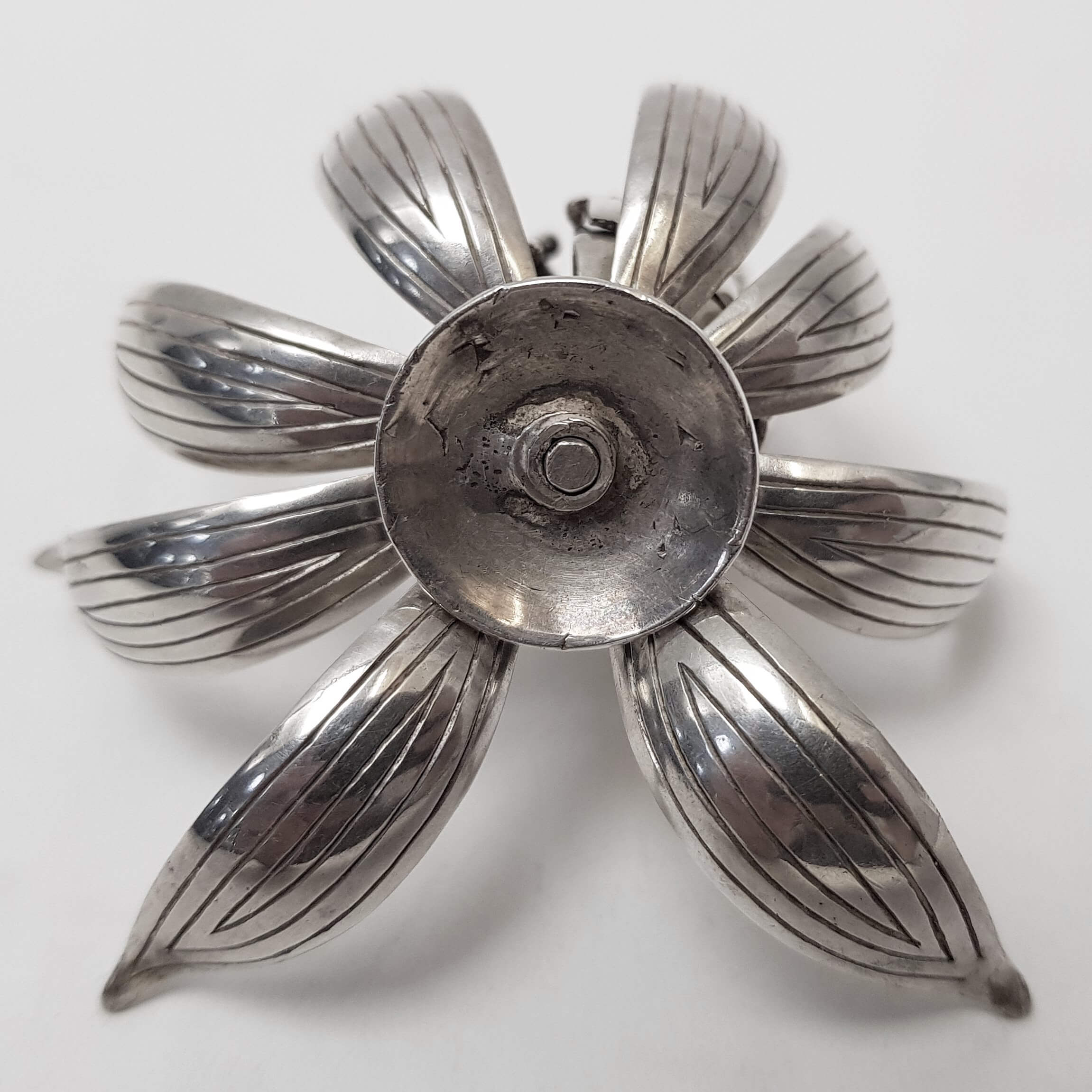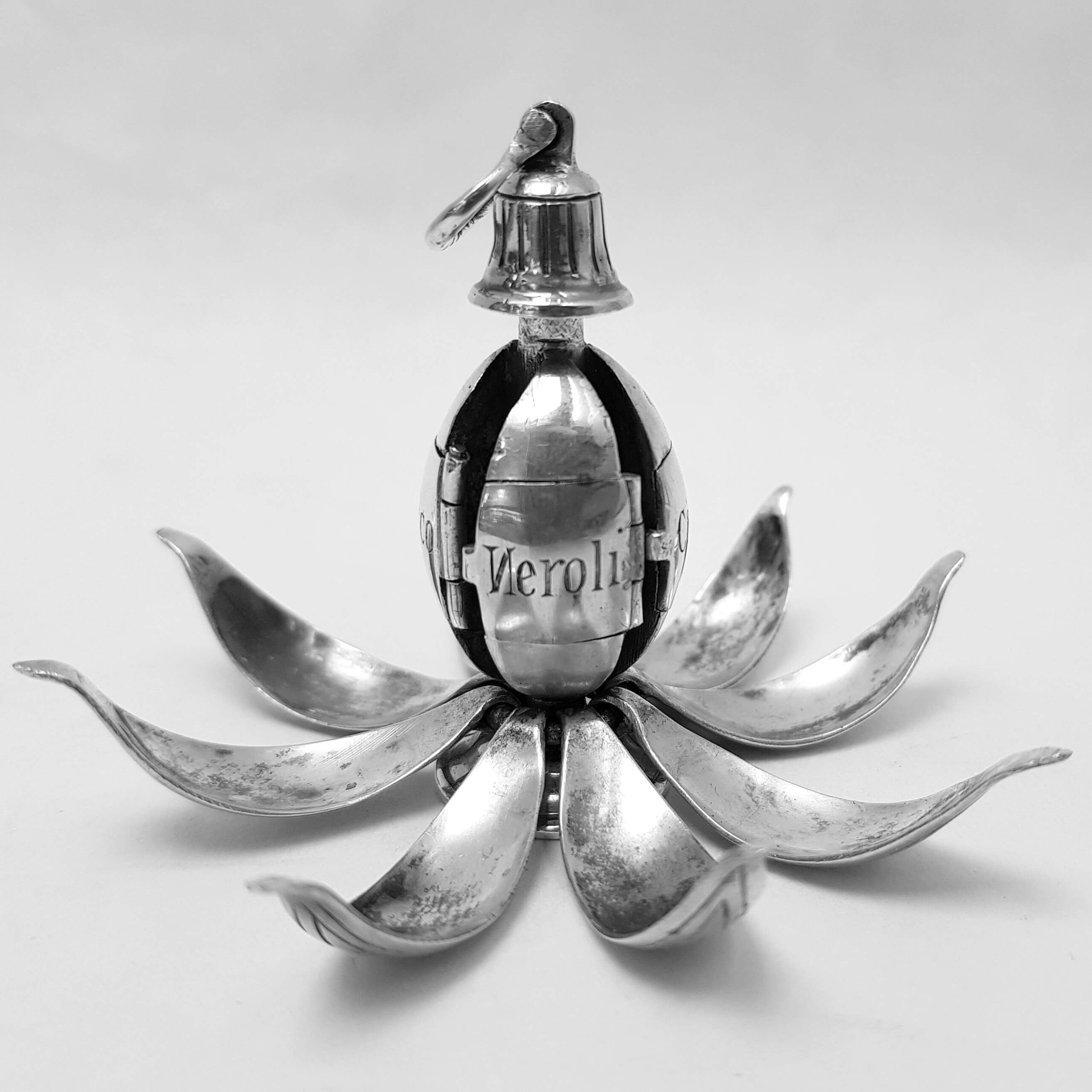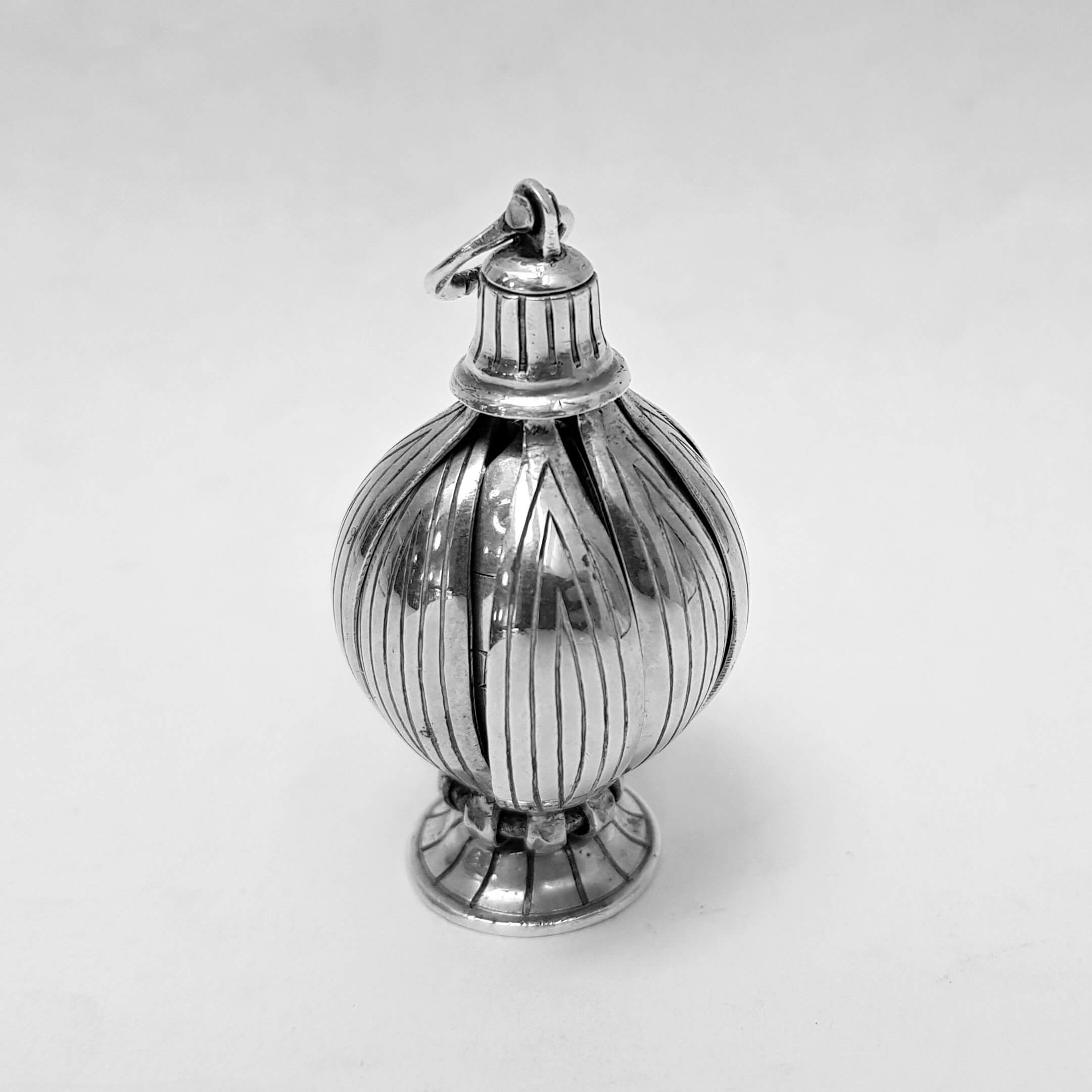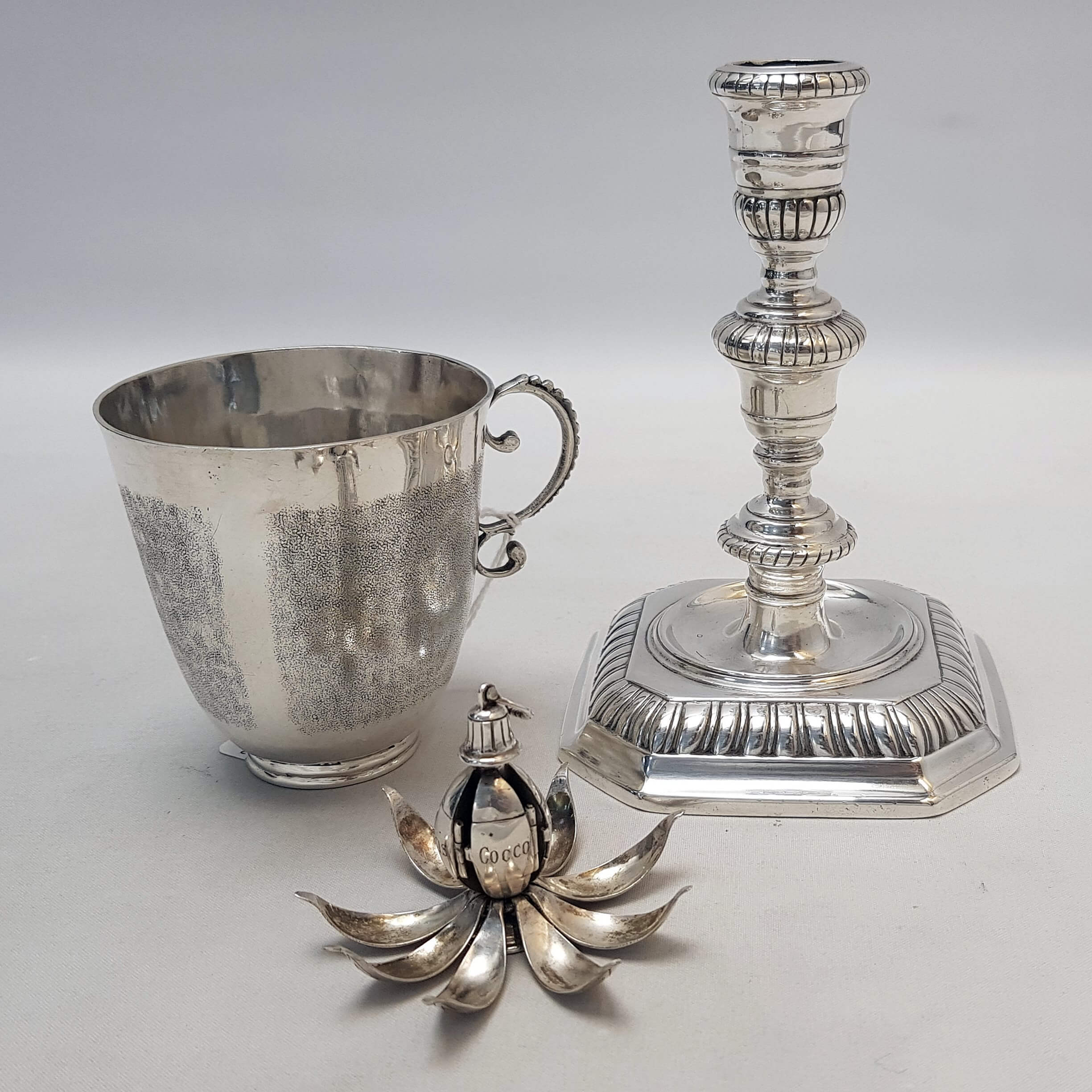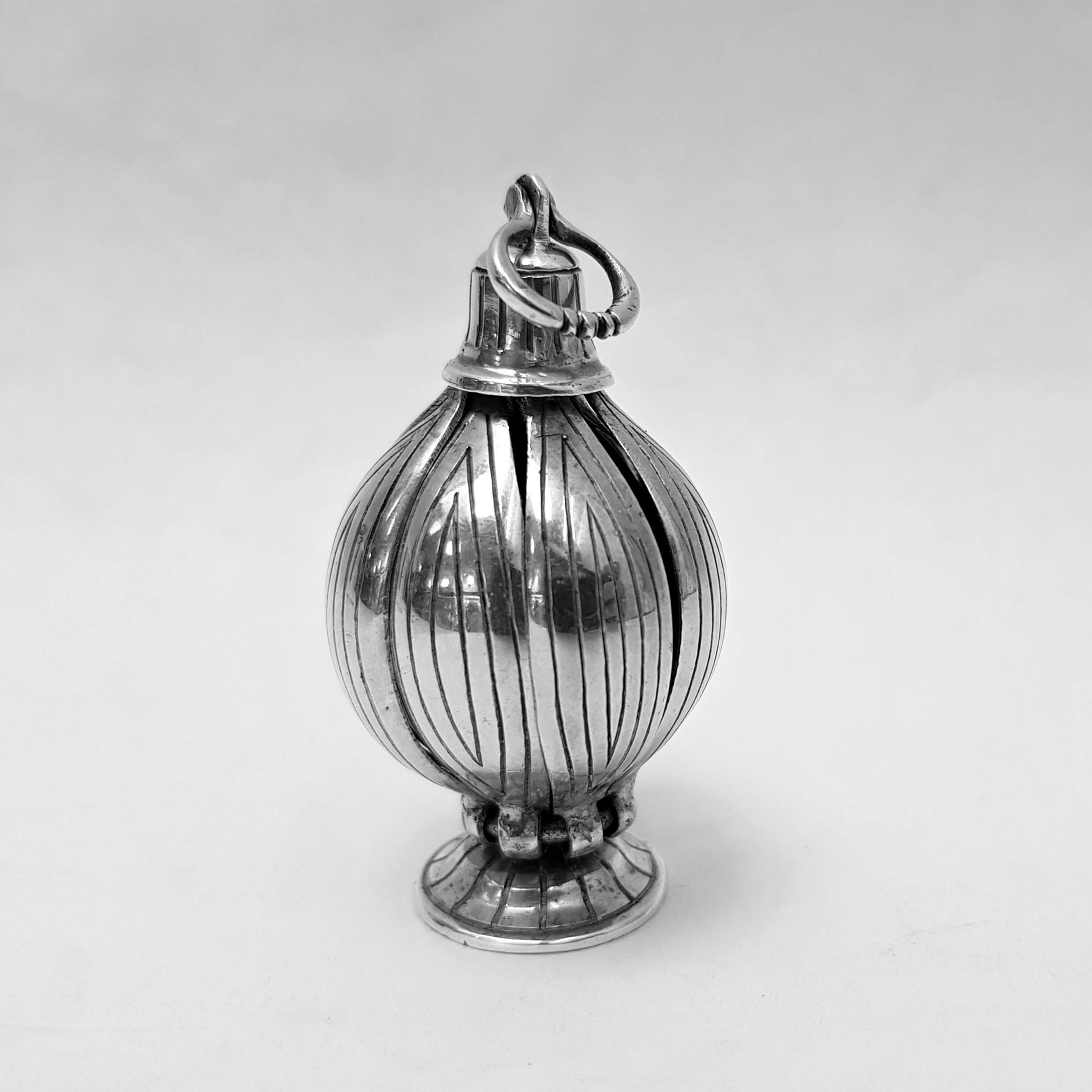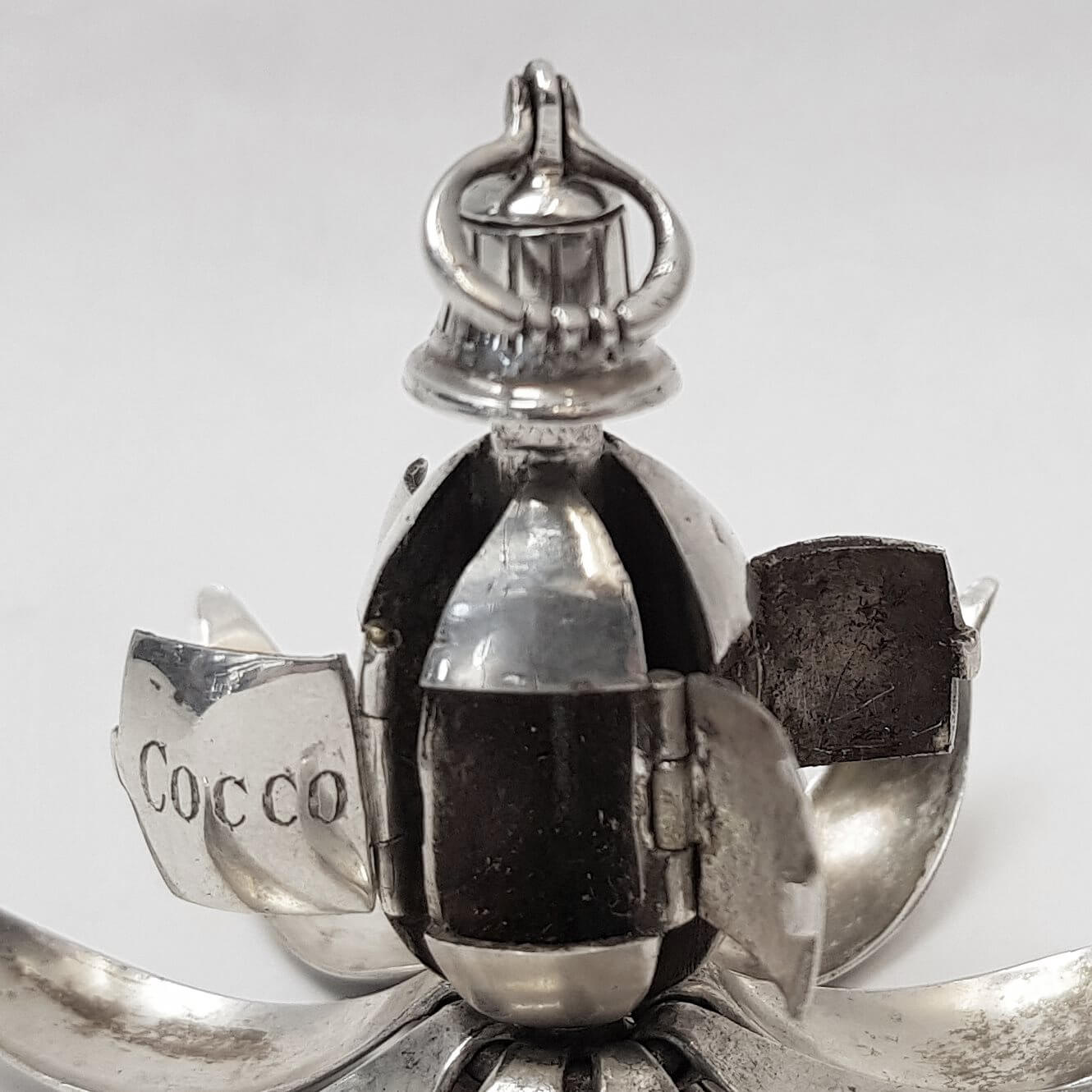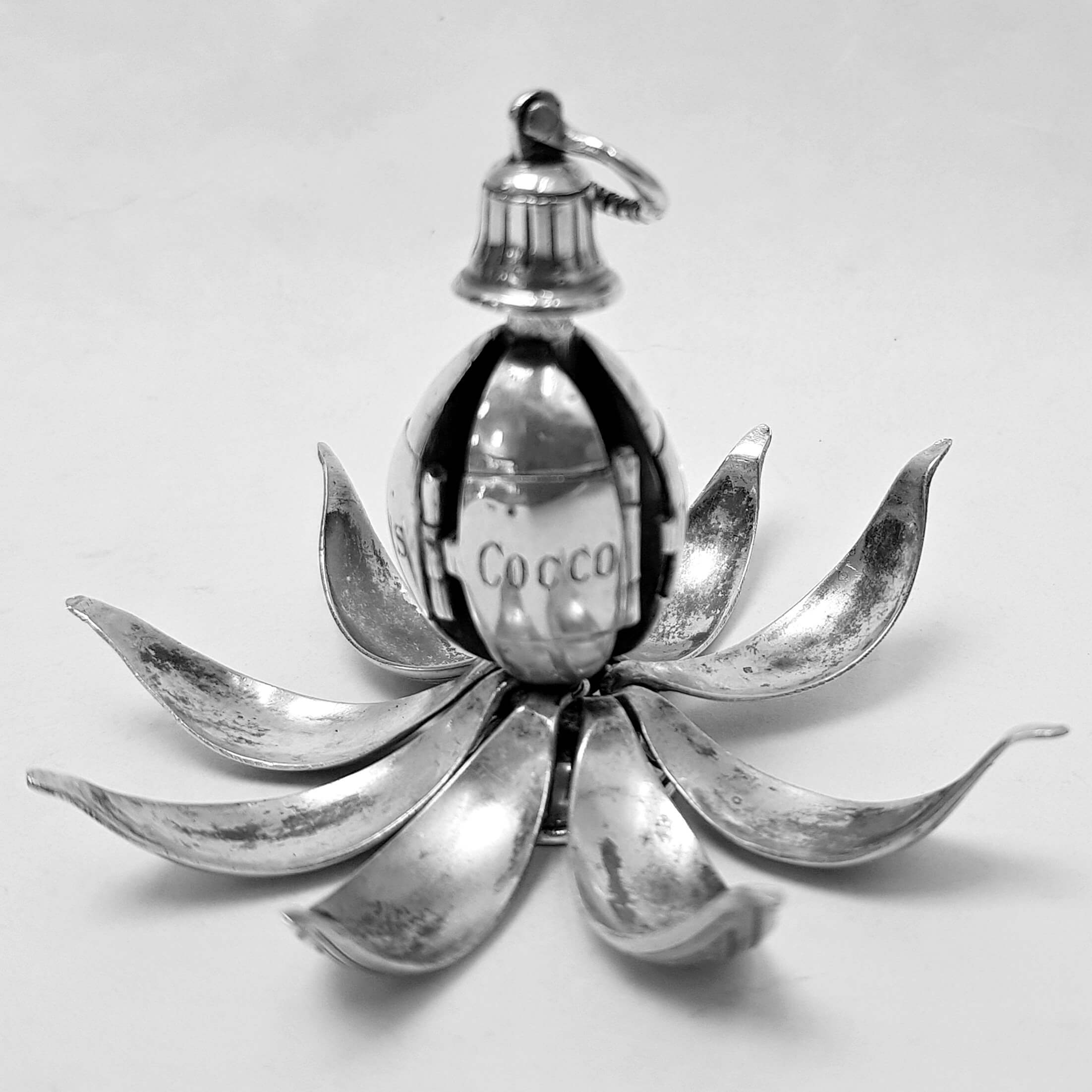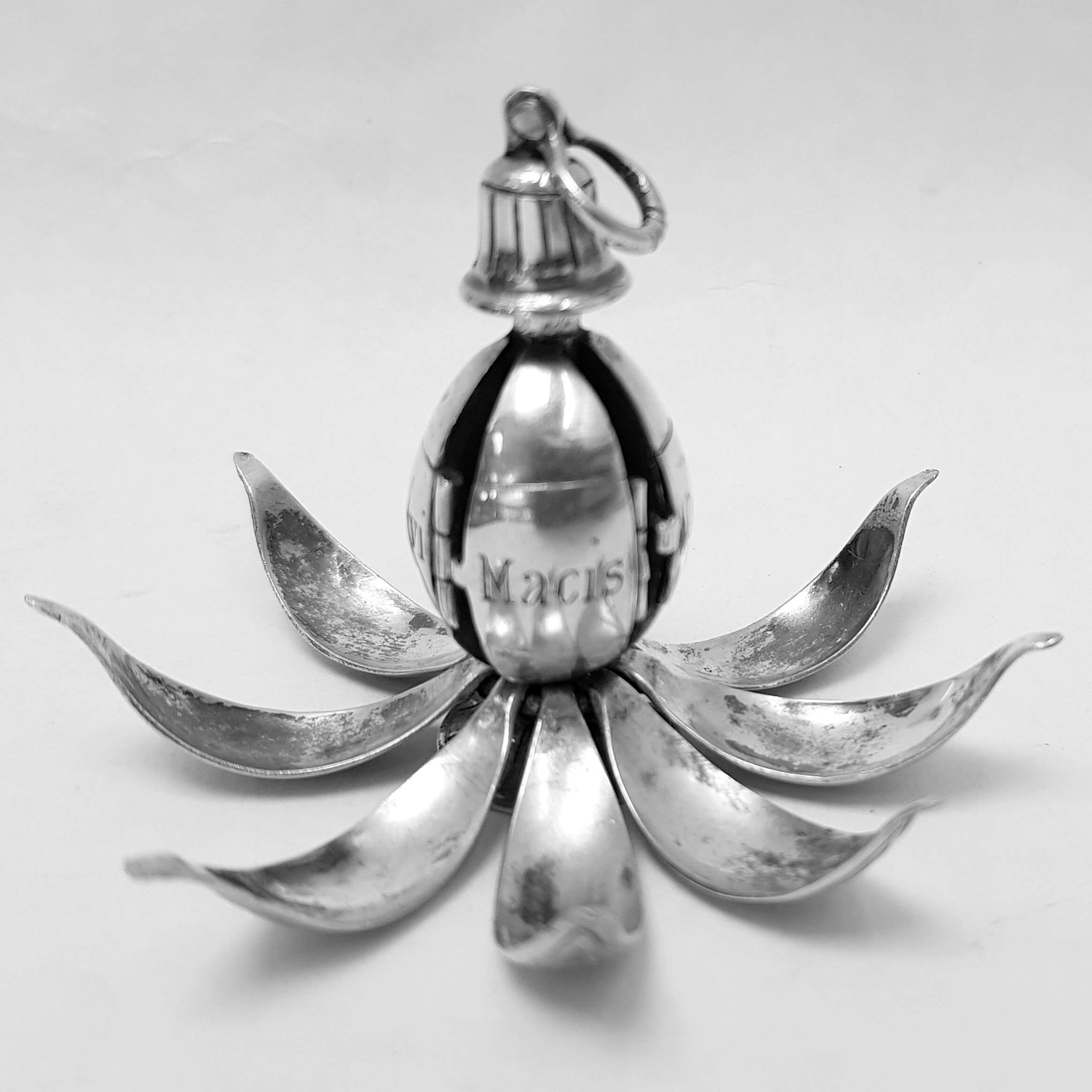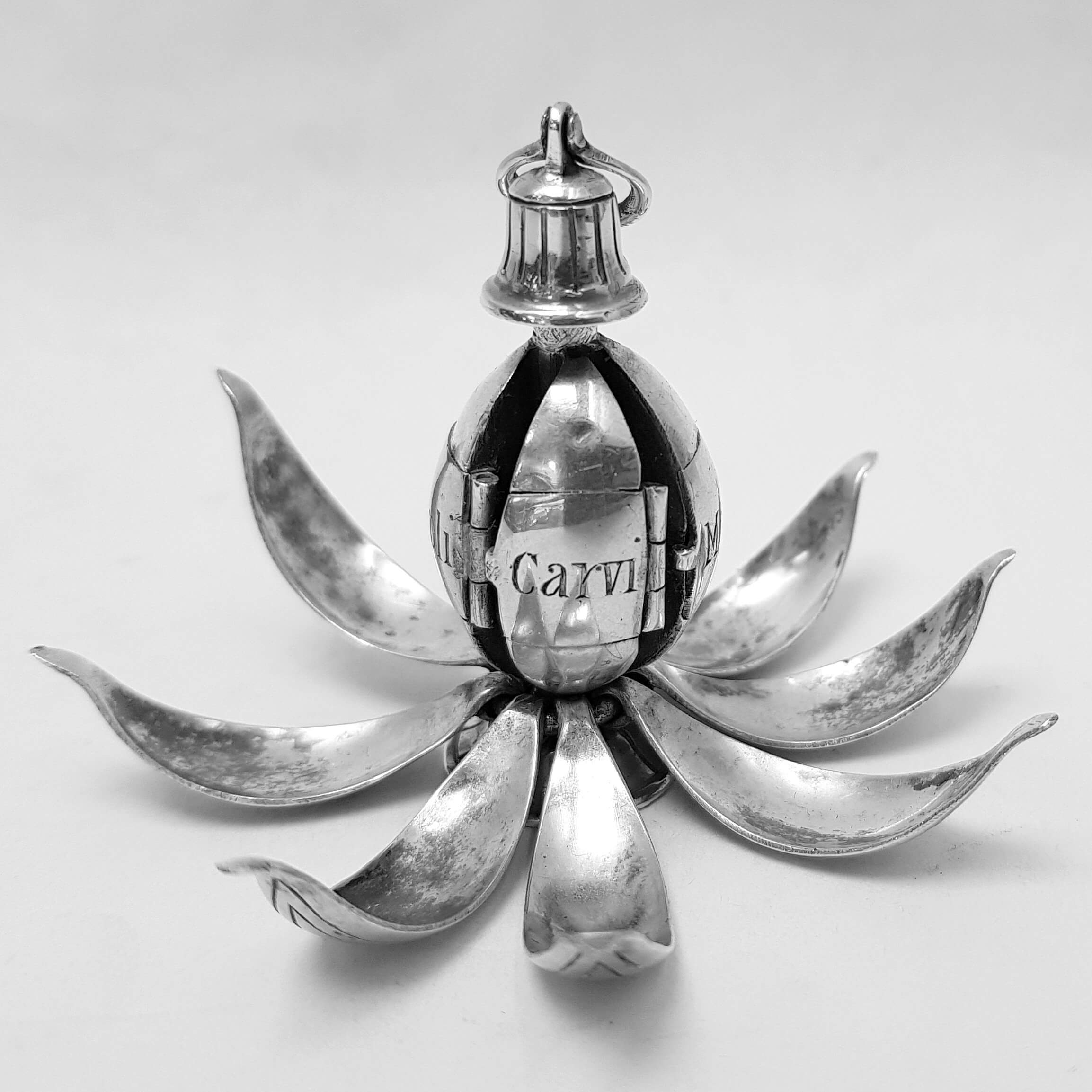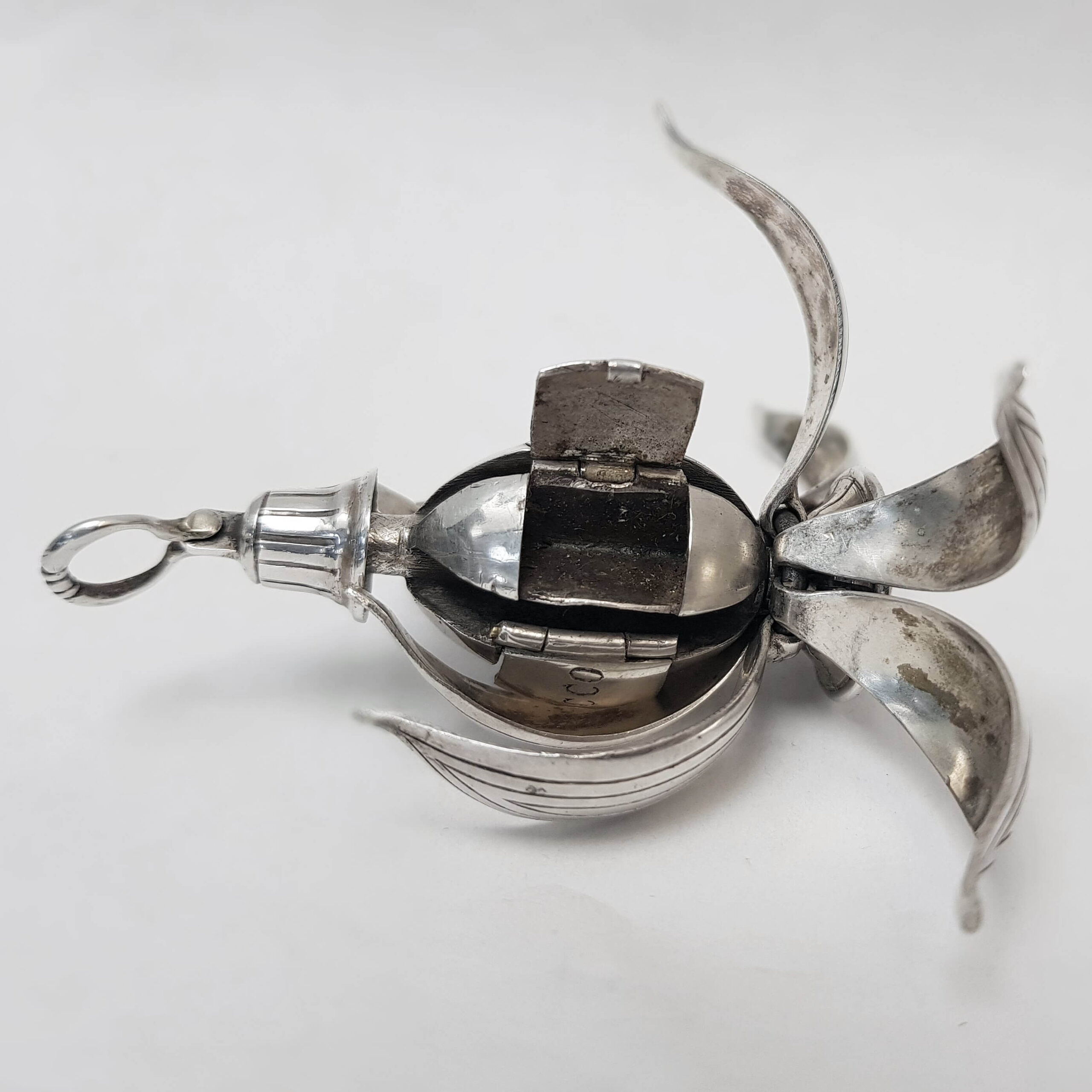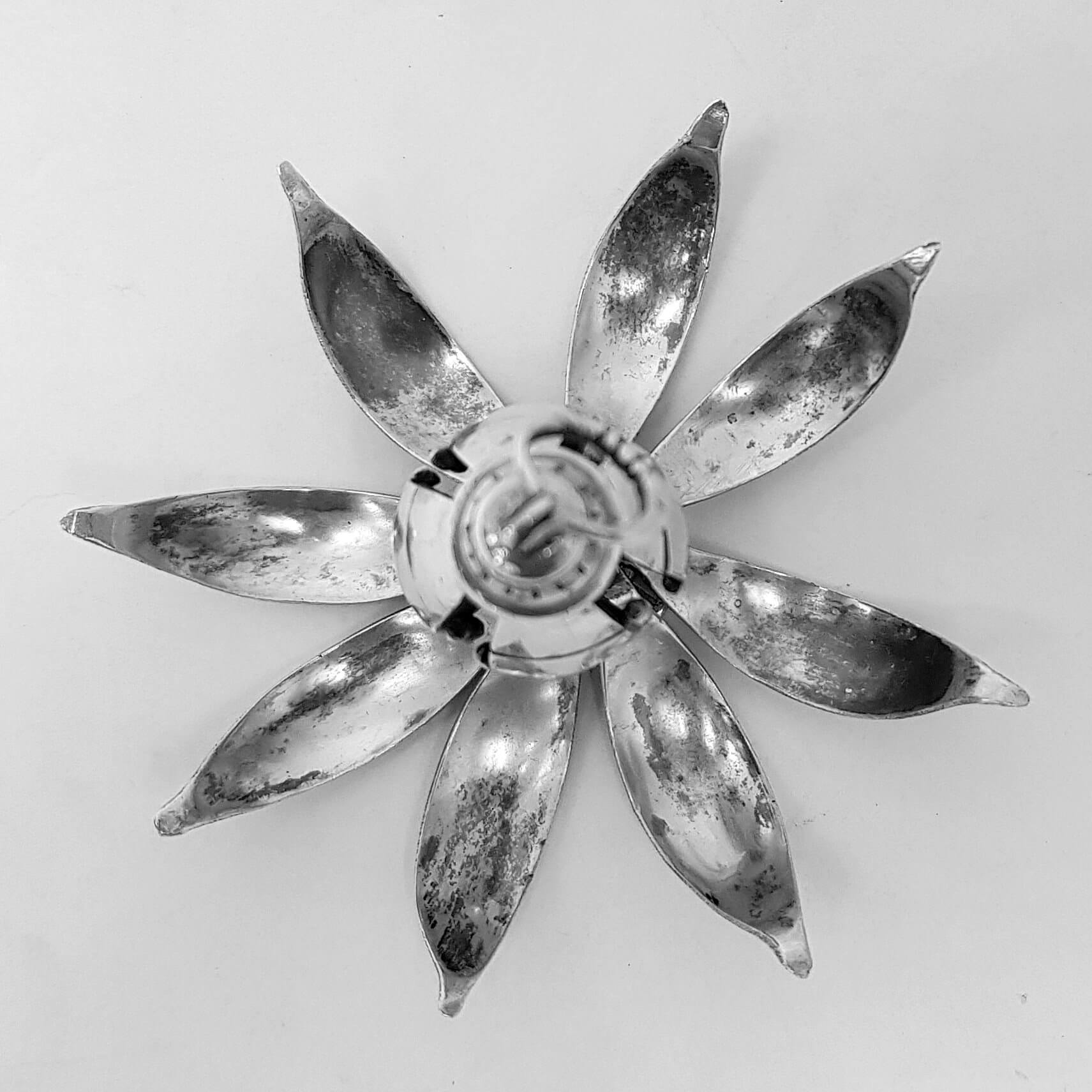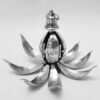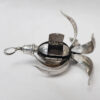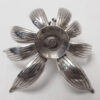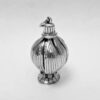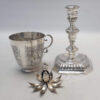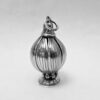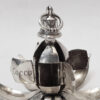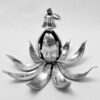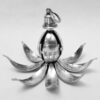17th Century Antique Silver Pomander
SOLD
Stock: 10297
Date: Circa 1650
Country: Italy
An exquisite little historical item dating back to circa 1650. The antique silver pomander of “segmented-apple” form has eight leaf-shaped...
Description
Condition
The pomander is still in very good condition and is in fully functional condition. The inner compartments retain old wax residues; the covers all open and close well with a bit of stiffness due to the old wax. The segments fold and unfold easily but it takes a bit of practice to screw the bell finial down to secure the segments in place. The engravings are still crisp.
Maker Information
No maker assigned
Our Guarantee
Customer satisfaction is our primary concern
All silverware on our website is checked thoroughly prior to offering it for sale and every product listing contains a condition report and details of the silver hallmarks.
All items offered on our website include:
- Free Shipping Worldwide
- Tracked and Insured
- 14 day no quibble money back guarantee
- We are accredited members of LAPADA and conform to their strict professional standards
- We dispatch 1-3 days after receiving cleared payments
More detailed information about deliveries, returns and how to pay is available in the Help section at the bottom of this page.
